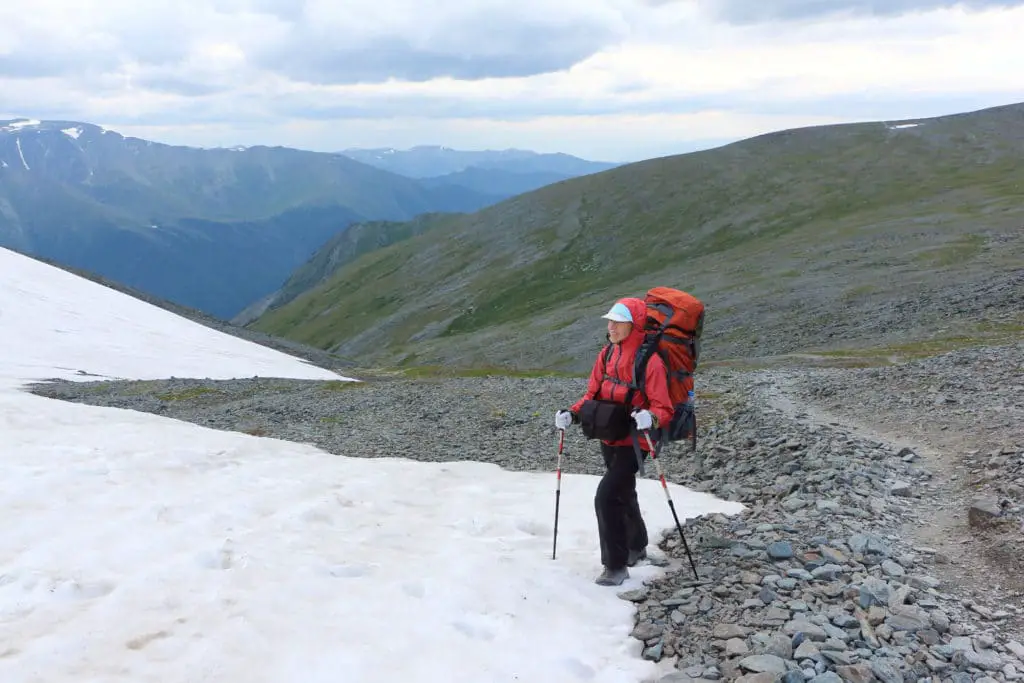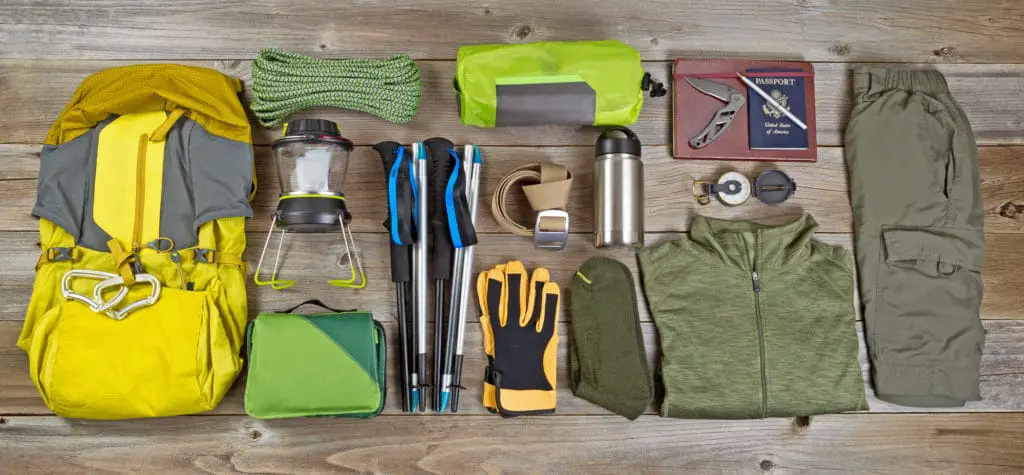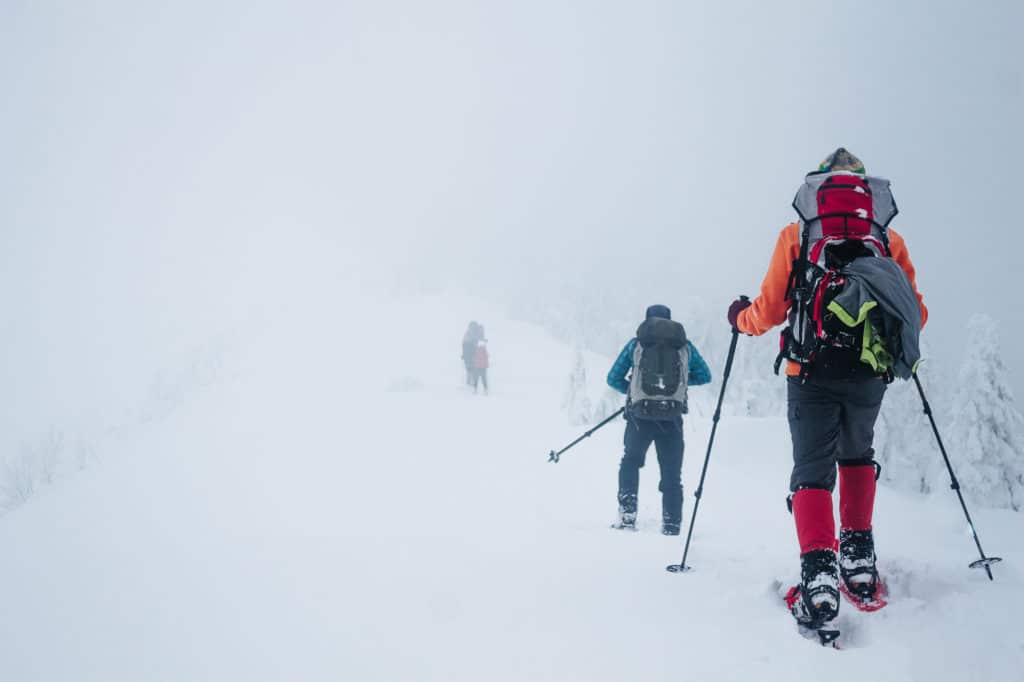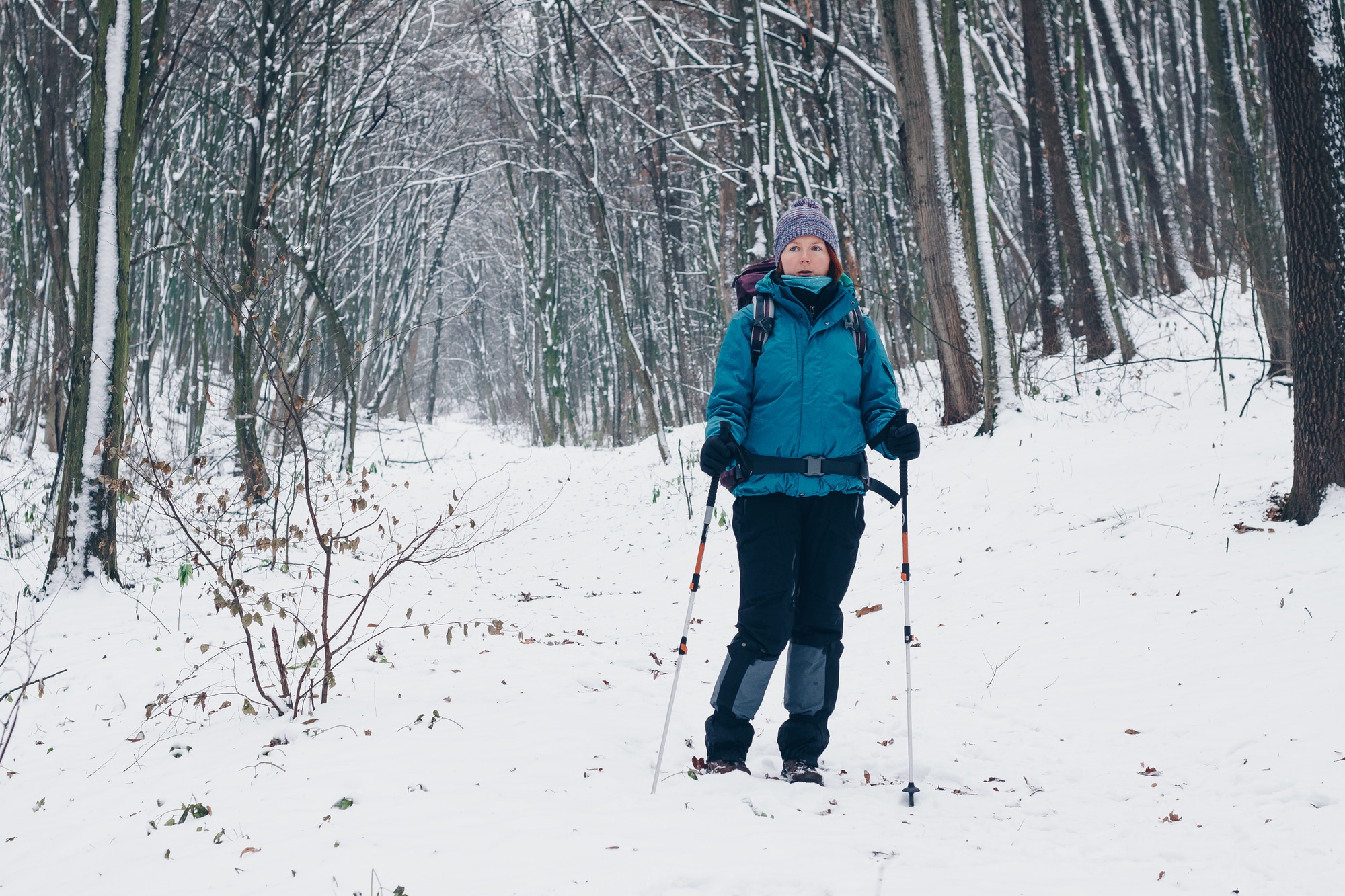There is no specific temperature at which hiking or camping is considered too cold to hike. Your experience level and gear, among other factors, should all play into deciding whether or not you are adequately prepared to hike in cold weather.
So let’s talk about what things you should be taking into consideration when planning winter hikes. Weather, terrain, fitness and experience level, and equipment are just some of the topics we will discuss to prepare you for the cold outdoors.
Table of Contents
How to Prepare for Hiking in the Cold
Cold temperatures don’t just happen in the winter. So when you are preparing for any hike, you need to consider things like terrain, time of year, and weather.
Elevation

Elevation should always be a consideration before you go on any hike, summer or winter. Of course, you will be expecting cold in the winter no matter what the elevation, but during the summer, you may be unpleasantly surprised by extremely cold weather on your alpine hike or backpacking trip.
For every 1000 feet that you ascend on your hike, you should expect the temperature to drop an average of four degrees Fahrenheit. That means if you start your hike at 3000 feet on a beautiful, sunny, sixty-five-degree day and ascend to 8000 feet, you should expect to feel the temperature drop by twenty degrees to 45℉.
Ascend another 2000 feet, and the temperature may drop to 37℉. Throw in some peak-created weather patterns of cold wind, clouds, and precipitation; you may find yourself unpleasantly surprised.
Weather
Always check with a weather service about the weather conditions before you leave for your outing. Trail apps often have links to local weather conditions, or it is easy enough to Google.
Read reviews of others who have recently been on the trail to learn about what they experienced. Good reviewers will leave detailed information about trail conditions, including snow, ice, or other trail hazards that you should be aware of.
Gear Up

Once you have considered the season, weather conditions, elevation, and terrain, your next step will be to gear up accordingly. Here are items you might need according to the conditions you will be heading into:
- Toe and finger warmer packets: There are a variety of battery-operated and chemical-based warmers. These are made to fit comfortably in socks and gloves to provide your extremities with extra heat in extreme cold.
- Sunscreen: Cold is not synonymous with cloudy; protect your skin from direct sunlight and glare.
- Sunglasses or goggles: Sun protection for your eyes is also a must, especially from sun glare off of snow.
- Microspikes or Crampons: Light and easily transportable, a pair of microspikes should be in your pack no matter the weather forecast. They are great for ice, packed snow, mud, and steep slopes. Crampons are more for the serious climber and steep slopes.
- Snow Shoes: If your hike includes deeper, powdery snow, you should have snowshoes with you. They will keep your feet from going too deep into the snow, which could allow snow and moisture to get into your boots and get your socks wet.
- Ice Axe: An ice axe is an essential tool for climbers and hiking along steep snowy slopes. Make sure you learn how to self-arrest if you find yourself slipping down a snowy slope, it could save your life.
- Trekking Poles: Will help with more difficult conditions as well as testing snow depth and ice thickness.
Best Clothing Material for Cold Hikes
Wear Layers
What you are wearing is a critical part of being prepared for the cold. You should layer your clothing in a three-part system, a base layer to wick perspiration away from your skin, a mid-layer to keep you warm, and a shell layer to keep out moisture.
You may find yourself sweating and stripping off layers if you are gaining elevation, but once your body stops working so hard, you will cool off, and the sweat on your skin and clothing will begin to make you feel very cold.
Always bring extra clothes and plan on changing layers throughout your hike if they become wet. Staying dry is key to avoiding Hypothermia.
Use Synthetics or Wools
These materials will dry much faster if they get wet. Avoid cotton clothing if you can. It takes a very long time to dry and if you forgot to bring a change of clothes not drying fast enough could be a problem.
Keep Your Skin Covered
Any exposed skin in freezing temperatures will be susceptible to frostbite. Pay special attention to your covering your nose, fingers, toes, ears, and cheeks.
- Fingers: Light or Midweight fleece gloves under a waterproof shell.
- Feet: Synthetic or wool socks are best with waterproofed and insulated boots. Gaiters are recommended too, especially if you are walking through deep snow.
- Ears: A winter hat or headband will help keep your ears nice and toasty. You should be wearing a hat no matter what because we lose a lot of heat through our heads.
- Nose and Cheeks: A face mask or neck gaiter should do the trick for your face.
Dangers of Hiking in the Cold

Frostbite
Frostbite is a potentially serious condition where your skin freezes. There are three stages of frostbite:
- Frostnip: Frostnip is easily treated by covering the exposed skin and warming the affected areas. Your skin may turn white or a pale yellow and feel itchy, burning, or a kind of pins and needles sensation.
- Superficial frostbite: This is the intermediate stage of frostbite. You will feel like your skin has become harder, it will look shiny or waxy, and if the skin thaws blisters full of fluid will form.
- Deep frostbite: In advanced frostbite, your skin will be hard and cold to the touch. It will also become a dark blue or black color.
If you are experiencing advanced frostbite, you may not even know it because the skin is frozen, and you can no longer feel it. Check your skin color often if you are worried about advanced frostbite.
Field care for frostbite:
- Get to a warm place like a warming hut or shelter.
- Don’t rub your skin (it can damage it).
- Remove all wet clothing and replace with dry.
- If you have a companion, place toes or hands in their armpits.
- Take aspirin if you have it – it can help with circulation.
- If the skin is very frozen, do not try to unfreeze if you think it might freeze again because the tissue that refreezes rarely can be saved.
To learn more about how to recognize and care for frostbite, check out this article from webMD.
Hypothermia
This is a condition where your body temperature begins to drop. Normal body temperature is 98.6℉. Hypothermia begins when your body temperature drops below 95 degrees and is a medical emergency. Left untreated, Hypothermia can lead to cardiac arrest and death.
Symptoms of Hypothermia:
- Clumsiness
- Shivering
- Sleepiness
- Exhaustion
- Weak pulse
- Fast heart rate
- Rapid Breathing
- Pale skin
- Confusion or poor judgment
- Excessive urination
Field Treatment of Hypothermia:
- Reduce heat loss: Remove all wet clothing and find shelter or protection from wind and cold.
- Hydrate: Drinking water is critical for survival if you are experiencing Hypothermia.
- Eat: Consume as many calories as you can to help your body warm itself.
- Activity: Violent shivering is a normal bodily process to warm itself up. Do not suppress it, and try to move around if you can to help warm the body.
Read more here to understand how to prevent and treat Hypothermia. To understand how to prevent and treat Hypothermia, check out this article from the Cleveland Clinic.
Difficult Trail Conditions
Trails covered in snow and ice are difficult to traverse, making it easier to get lost. Always bring a map or navigation tool with you. Remember, snow and ice will slow you down, so don’t forget to account for that during your pre-hike planning session.
Trail Markers Hidden
Snow and ice may be hiding trail signs, so keep your navigational device handing.
Less Daylight
If you are doing winter hiking, account for shorter days and less light. Clouds and inclement weather will also reduce daylight and visibility, so it’s a good idea to carry a flashlight just in case.
Safety Tips for Freezing Weather
- Never hike alone.
- Notify friends or family where you are hiking and when you should be back.
- Bring maps or navigation equipment.
- Bring plenty of extra food and water.
- Wear layers and bring extra clothing in case something you are wearing gets wet.
- Bring a Space Blanket.
- Always carry something to start a fire.
Frequently Asked Questions
What Should You Wear for a 40 Degree Hike?
Start with a light synthetic t-shirt, layer with a long-sleeved fleece that zips in front, make sure to have a waterproof shell and long pants. Use wool or synthetic sock liners, and remember to bring an extra t-shirt just in case. You should have a hat and gloves handy as well.
What Should You Wear for 32 Degrees and Below?
You should wear a synthetic or wool base layer on both your upper and lower body. Your insulating layer should be thicker than your base layer, and be sure to have a heavier, rain-resistant jacket.
Sock liners should be worn with a thicker warmer sock and insulated, waterproof boots. Pants should also be waterproof. Hat, gloves, gaiters, hand and foot warmers should all be with you on these cold hikes.
When is Hypothermia a Concern?
Hypothermia can happen if you are exposed to cold water, rain, wind chill, or air. It can happen in temperatures as high as 50°F. Shivering, drowsiness, confusion, and slurred speech are just some of the symptoms of Hypothermia, and you should find a way to warm up immediately.
Final Thoughts
The best defense against hiking in the cold is preparation. Know your route, know the terrain, know the weather, and most importantly, know yourself. With the right hiking gear and clothing, you can find yourself enjoying beautiful hikes all year round.

